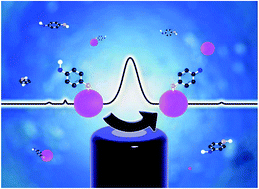Single particle electrochemistry of p-hydroxythiophenol-labeled gold nanoparticles†
Abstract
In this communication, we assembled an electroactive p-hydroxythiophenol (p-HTP) monolayer on a gold nanoparticle surface and produced an amplified single particle-collision electrochemical signal, thus allowing us to sensitively detect the size and functions of inert gold particles in aqueous solution.


 Please wait while we load your content...
Please wait while we load your content...